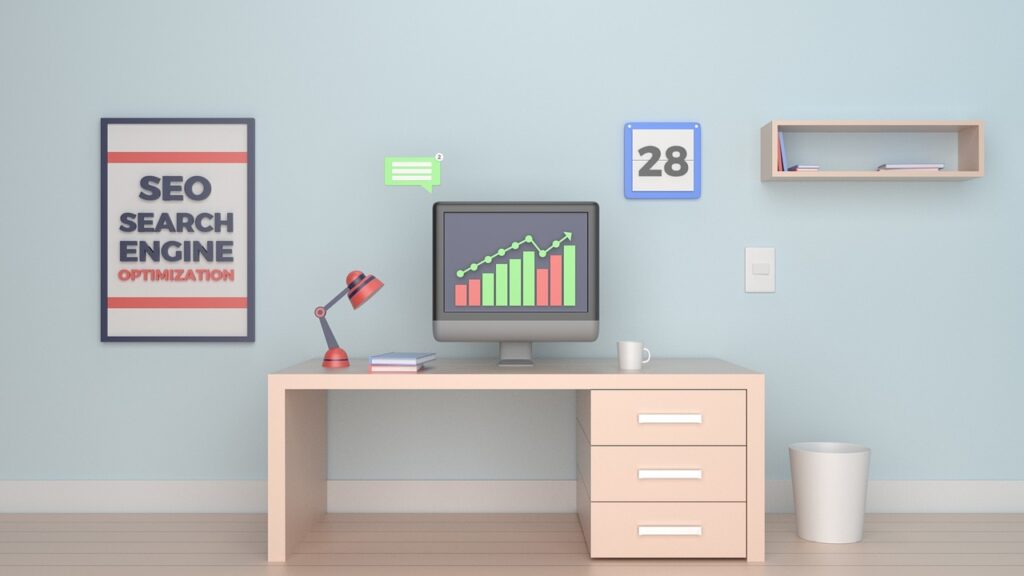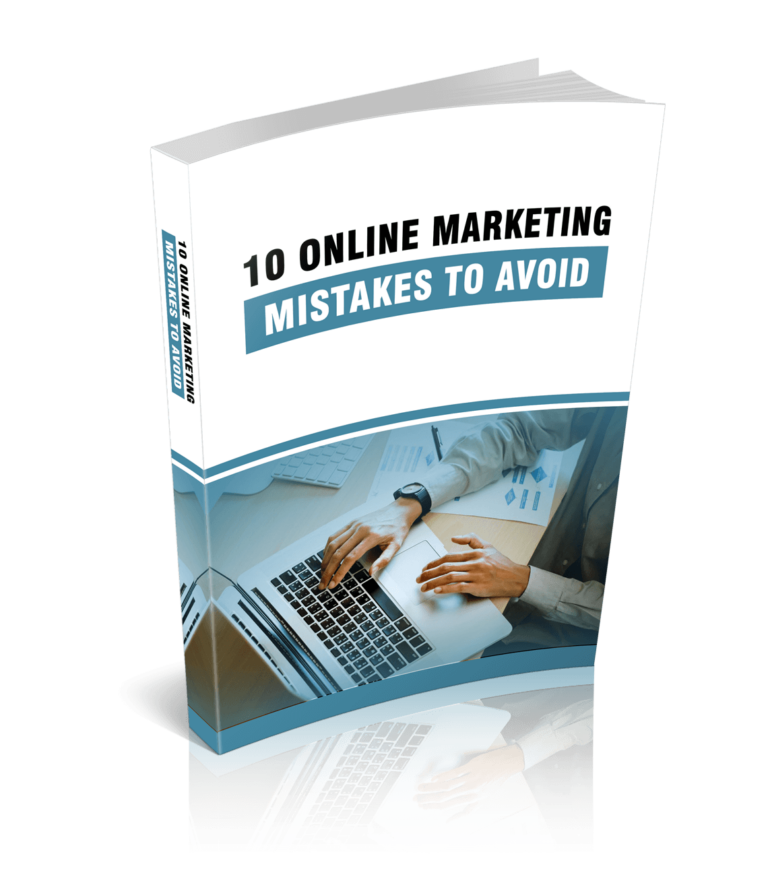Search engine optimization is an ongoing process that allows you to rank high on search engines and increase traffic to your business pages. It is the most effective way to generate leads, build brand awareness, and turn browsers into customers.
Get free exposure, attract more people to your content, and grow your business by applying the best practices.
This guide will help you to achieve your SEO goals and get you one step ahead of the competition.
SUBSCRIBE TO INCOME PATROL
Get updates on the latest posts and more from Income Patrol straight to your inbox.
USE PROPER KEYWORDS
Use the right keywords that users search for when looking for specific things. For example, if you run a tech business, use words or phrases specific to your niche in your ad campaigns, posts, and overall content. Know what your target audience searches for when looking for certain information. What are the most common phrases? Identify 10 or so and use them repeatedly in your marketing efforts.
Avoid keyword stuffing.
Keyword stuffing is the process of loading a webpage with out-of-context keywords in an attempt to manipulate a site’s rankings in search results. It should be avoided at all costs.
Include the most common keywords within your content to reach your SEO goals but don’t overdo it. Don’t repeatedly use the same phrases in the name of making it to Google’s top 10 search results. That can ruin your brand’s reputation and force people off your site. Plus, Google will also penalize your site for it.
Key things to consider when choosing keywords.
● Your prospects.
Decide who your target audience is and know their interests. What are they looking for? What problems are they facing? And What solution does your product, service, or content provide? Answering these questions will help you to reach your target audience and is a great way to ensure you use the right keywords within your content.
Once you figure out what they need, look for the most common phrases they use when searching. Include them in your headlines and meta descriptions.
● The competition.
Know your competition. Search for sites that have viral content within your niche or ones with high traffic volumes. Study how they structure their content and the type of keywords they incorporate into their strategy.
● Relevance.
At the end of the day, it’s all about staying relevant. So, provide information that’s relevant to your audience and keep them coming back. Don’t use certain words or phrases simply because they are common in your industry. Remember, your keywords have to seamlessly fit in with your content and stay relevant to your audience.
So, focus on search intent. What is your audience looking for? If you are a content creator, for example, and are targeting site owners who are looking for content developers, post an article or articles that focus on providing different solutions on your site. Optimize your title tag and meta description. Use keywords that give an appropriate answer to their queries and guides them to your content.
For example, use “Top 5 traits of a professional content creator” as your headline or add “Your all-in-one solution to expert writing, search engine optimization, and content marketing” to your description. This will pique the user’s interest and encourage them to explore your services because you are offering what they are searching for and more.
If you get stuck and aren’t so sure what types of keywords to include, use Google AdWords Keyword Planner or SEMrush for great ideas. Both tools provide statistics on how popular certain keywords are and how often they are used. They also offer great suggestions to help you with the keyword research process.
Once you identify the right keywords relevant to your audience, move on to the next step.
OPTIMIZE YOUR CONTENT
Know where to apply proper keywords to your content. This will help you to not only rank high on search engines but enable you to produce valuable and well-structured material that people favor.
Create quality content.
The first and most important step to reaching your SEO goals is to create quality content. Don’t make the mistake that most marketers or business owners make; ignoring the content creation process.
Share helpful information to grow your audience, earn trust, and get people to purchase your product or service. People prefer to work with businesses they trust or ones they have had a great experience with in the past. Meaning if you focus more on providing useful information to your audience rather than making sales you will eventually meet your goals.
Remember, you are writing for people who have particular needs to be met, challenges to be overcome, and problems that need to be fixed. So, find effective ways to ensure your content, product, or service provides answers. Post informational or educative content. Share product or service comparison articles. Post regularly and ensure you provide up-to-date information. Use meta keywords throughout your content but again, don’t go overboard.
Another great tip is to publish long-form content because it always ranks high on search engines. So, create and share at least two 2500 to 3000-word articles weekly.
Key places to add keywords.
Use keywords and meta descriptions on every page. Apply them to the following parts of your content and ensure success.
● Your title.
Title tags are the most important part of your content mostly because they contain information that often determines whether or not users continue to your content. They are clickable and give browsers an idea of what they will find if they were to follow your link. Keep the title tag under 60 characters and use proper keywords. Come up with a descriptive title that matches search intent and avoid keyword stuffing.
Use subheadings to easily guide people through your content and for better rankings. For example, h2, h3 tags, and so on.
● Descriptions.
A meta description is a snippet that appears just beneath the title tag. It should contain a persuasive and brief summary of what your page is about to pique the user’s interest. Meta descriptions have the power to attract users to your site and increase click-through rates. So, use them to drive more people to your site.
● Images and videos.
Add images and videos to your content for better engagement and to keep users on your site longer. Ensure search engines easily find, interpret, and display your content by optimizing your images for SEO. Use the alt tag to describe an image if a user can’t see it. Write a short, relevant, and accurate description.
Also, consider the size, format, and quality of your pictures or videos. Use smaller image file sizes to ensure your pages load faster. Avoid larger ones as they can slow down your site. Use TinyPNG to reduce your JPEG and PNG file sizes and give users a great experience.
FOCUS ON LINK BUILDING
Next, get people to voluntarily share your content and continue following your pages by coming up with an effective link-building strategy.
Links help you to build authority and are a great way to ensure search engines favor your content.
So, include the following in your strategy:
● Use internal links.
Use internal links to encourage people to access important content throughout your site. Help them easily navigate through your pages and engage with more of your content. Use relevant keywords on one post to link to a different part of your page. This leads to more readership and encourages users to stay on your site because they know that it is the go-to place for different kinds of information.
● Get more backlinks.
Use backlinks for more traffic, exposure, and rankings. Backlinks are your best marketing method because they prove credibility and assure users that you are an expert in what you do. Share valuable resources, get referrals from different websites, and rank for relevant search queries.
Get more backlinks by connecting with popular sites within your niche and asking them to mention your content or link back to some of your best pages. If they have a great reputation and authority, they will greatly increase traffic to your site because their audience already trusts their content. Following external links is much easier and doable for them.
Relevancy is important, so ensure you work with sites within your industry. Meaning, if you own a car sales business, don’t look for backlinks from a site that focuses on art and design. People follow links based on relevancy because they are more trustworthy and help you show that you have established yourself in your field.
Get backlinks by publishing ultimate guides, sharing evergreen content, producing unique content, recording helpful videos, including quizzes, and so on.
● Guest blog.
Guest blog or write an article for another site and link back to your site. Pitch to relevant websites and convince them to work with you. Target high-ranking blogs and get your content published on them for better results. Add links to your site on the author bio, at the end of your article, or within your content. Make sure the link effortlessly fits in with the content.
● Learn from your competitors.
If your competitors are getting more mentions and ranking high on searches than you do, observe their strategy. What are they doing that keeps them a step ahead? Where do most of their backlinks come from? Which pages command more attention?
Doing this will help you to learn and apply some of the best practices in your content creation and link-building strategies.
Another great tip is to build authority in your niche and establish your brand. Be the go-to-person for certain information. Share valuable content and raise brand awareness through social media platforms. Open business accounts, join Facebook groups, start a YouTube channel, connect with like-minded people, and stay active on your social channels. This is a brilliant way to get social backlinks and encourage your audience to share your content.
Other methods include; email outreach, link reclamation, content repurposing, and broken link building.
Make sure your content is optimized for different users for more mentions and to give them a better experience.
Achieve this by taking the following step:
OPTIMIZE FOR MOBILE
Mobile-friendly content ranks high on SERPs. It is also great for SEO. Plus, a lot of people browse from their mobile devices and spend more time on them. So, make sure your site is responsive and optimize your content for different devices.
Go to ‘search.google.com/test/mobile-friendly’ to test if your site is mobile-friendly. Enter your site URL to begin the test and learn more.
Create a mobile SEO strategy.
Mobile search engine optimization helps you generate leads, enable users to easily find your business, and drive sales. Appear on search results and get high rankings by creating a mobile SEO strategy.
Top 5 methods to an effective mobile SEO strategy.
- Make your site responsive.
Ensure your site adapts to any device to make it easy for users to go through your content. Ensure your content fits perfectly to user devices and avoid the frustrations that come with constantly zooming in and out of pages. Optimize your articles and images and view your website on different devices before launch. This is the best way to guarantee a great user experience and keep people on your content longer.
- Optimize your content.
Come up with an effective content strategy and optimize your mobile content. Use appropriate keywords, compelling headlines, and write long-form content. Between 2000 and 3000 words. This can lead to more backlinks and shares. Especially if you create well-researched quality content. Add CTAs where appropriate to inspire action.
Test if all your links are working properly before launching your site and add a simple navigation bar to guide visitors through your content. You can use categories, drop-down menus, and so on.
- Improve your site speed.
Your page’s loading time determines your rankings and how long people stay on your content. No one wants to wait 60 seconds to gain access to information that can be found someplace else. So, improve your site speed and make sure your pages load as fast as expected.
Some of the effective methods to speed up your site are; compressing large images, using browser caching, and minifying your code.
Use PageSpeed Insights or WebPageTest to your site speed. Both tools provide you with enough information to help improve your site. Find out what’s slowing down your pages on desktops and mobile devices and get recommendations on how to fix those issues.
- Optimize title tags and descriptions.
Optimize title tags and meta descriptions to convince users to click on your content and continue to your page. Use proper keywords on title tags so people know what they will find after following your link. Write a descriptive and convincing description for more clicks.
- Track your performance.
Track and measure your SEO success. Use Google Analytics to figure out how effective your mobile SEO strategy is. Find out how many people access your content from their mobile devices, identify how many keywords your site ranks for, and so forth.
Your mobile SEO strategy is the key to ranking high on search engines, reaching more people, and increasing traffic to your site. So, don’t neglect it.
Use the tips outlined in this article to make it to search engine result pages (SERPs) and get noticed online.
Search engine optimization is an on-going process. It is not something you work on once and abandon. You have to keep improving, keep learning, and continue implementing the best practices time and again. This is why the following step is important.
USE THE BEST TOOLS
SEO tools help with the learning curve and allow you to reach your goals faster. So, identify the best tools and use them in your SEO strategy.
We will only cover 5 of the best and highlight some of the great features that you can take advantage of.
Here we go!
- Ahrefs.
Get access to the best SEO tools and resources to improve your rankings and grow traffic to your site. Get a full report of your site’s performance and identify areas that need improvement. Check where most of your competitor’s backlinks are coming from by simply pasting their site URL.
Do keyword research and identify ones with high search volumes. Identify your best-performing content, study the competition, and get access to over 100 SEO technical issues along with fixes.
It’s easy to get started. Simply signup, verify your site and begin the SEO auditing process.
- SEMrush.
Monitor your rankings and learn the best ways to improve your site’s performance with SEMrush. Analyze your competitor’s site, look for high-ranking keywords, and so on. Identify your best-performing content, relevant keywords, social shares, etc. Know what’s working as well as what isn’t and make necessary adjustments.
- Google Analytics.
Google Analytics is the best overall SEO tool and I highly recommend you start using it. Use it to track user behavior and understand how people interact with your site. Gain access to complete search insights and web statistics. For example, rankings, traffic sources, bounce rate, page speed, and so much more.
You can also use Google Ads Keyword Planner and Google Console Search as alternatives.
- KWFinder.
Track your rankings, identify best-ranking keywords, get keyword ideas, and analyze backlinks. Use it to create your link-building strategy and get expected results.
- Ubersuggest.
Identify keywords that your target audience searches for as well as ones that work well for your competitors. Receive suggestions and use relevant words and phrases that lead to more search appearances and more traffic. Know which keywords the competition ranks for and find out how much traffic they are receiving.
Other great tools you can look into are; Keyword Surfer, Yoast, Screaming Frog, and SEO Monitor.
Pick an SEO tool that you prefer. Go for one that best suits your needs and allows you to reach your goals faster. Decide whether or not you want to go with free ones or premium ones. Pay attention to the features that come with each tool. Choose one that gives you access to all or most of the best features. If you want to learn faster, go with one that’s easy to master.
It all depends on your goals, budget, and preferences.
Pick a free all-in-one tool like Yoast if you are on a budget, want to shorten the learning curve, and if you have a WordPress site.
The above-mentioned tools are all great for search engine optimization and can help you to meet your goals. So, if you are looking for more features and want a great overall experience, upgrade to premium plans.
Bonus Tip
Follow SEO experts and their blogs. For example, Search Engine Journal, Search Engine Land, and the MOZ blog.
LIMITED-TIME OFFER!
With LIFETIME ACCESS membership ($67) you have access to ALL exclusive materials (current and upcoming) for lifetime. We create new courses, ebooks, webinars and downloads on a regular basis. This offer expires soon and will be replaced with monthly-paid subscription, so hurry up! Get access HERE!





